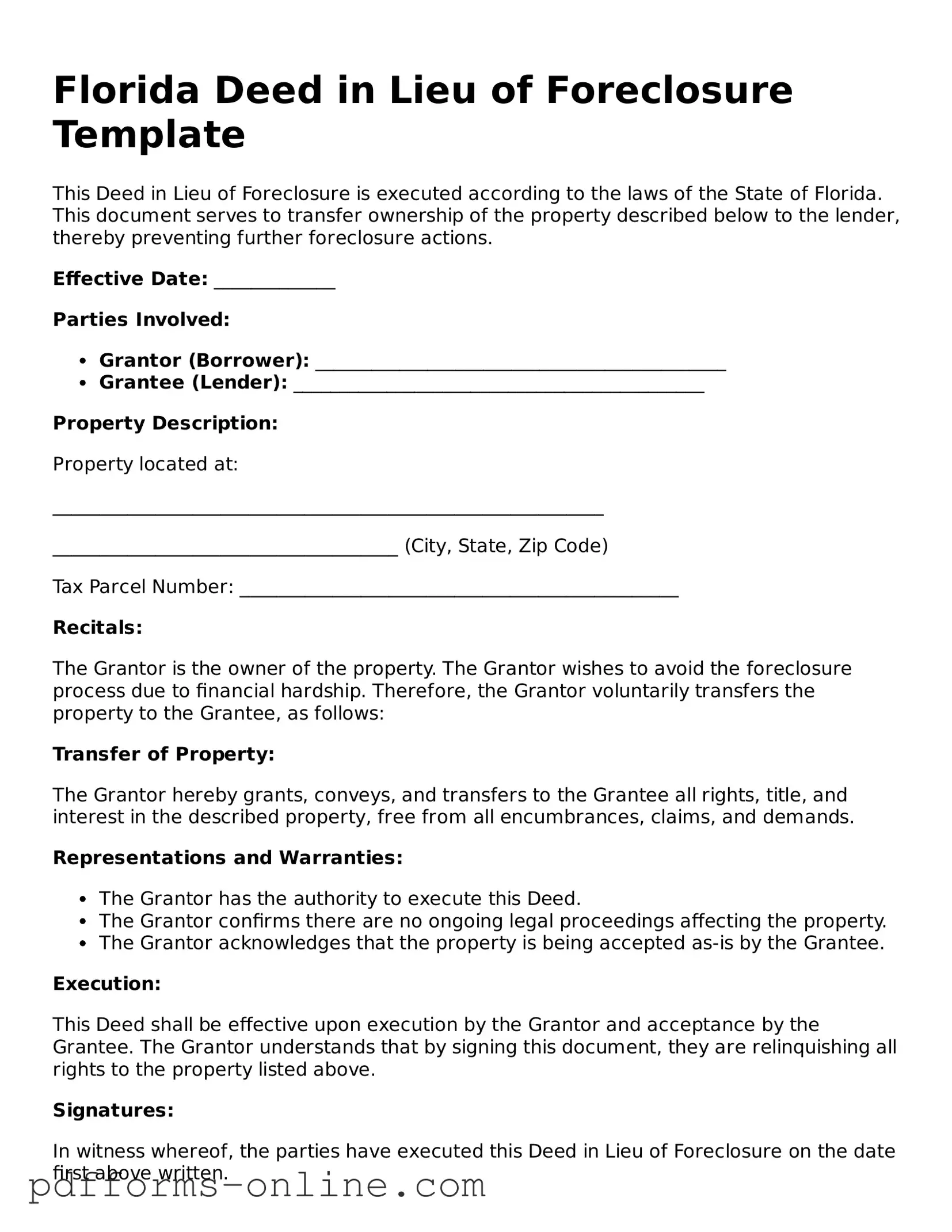Florida Deed in Lieu of Foreclosure Template
This Deed in Lieu of Foreclosure is executed according to the laws of the State of Florida. This document serves to transfer ownership of the property described below to the lender, thereby preventing further foreclosure actions.
Effective Date: _____________
Parties Involved:
- Grantor (Borrower): ____________________________________________
- Grantee (Lender): ____________________________________________
Property Description:
Property located at:
___________________________________________________________
_____________________________________ (City, State, Zip Code)
Tax Parcel Number: _______________________________________________
Recitals:
The Grantor is the owner of the property. The Grantor wishes to avoid the foreclosure process due to financial hardship. Therefore, the Grantor voluntarily transfers the property to the Grantee, as follows:
Transfer of Property:
The Grantor hereby grants, conveys, and transfers to the Grantee all rights, title, and interest in the described property, free from all encumbrances, claims, and demands.
Representations and Warranties:
- The Grantor has the authority to execute this Deed.
- The Grantor confirms there are no ongoing legal proceedings affecting the property.
- The Grantor acknowledges that the property is being accepted as-is by the Grantee.
Execution:
This Deed shall be effective upon execution by the Grantor and acceptance by the Grantee. The Grantor understands that by signing this document, they are relinquishing all rights to the property listed above.
Signatures:
In witness whereof, the parties have executed this Deed in Lieu of Foreclosure on the date first above written.
Grantor: _____________________________________
Date: ____________
Grantee: _____________________________________
Date: ____________
Witness: _____________________________________
Date: ____________
Notary Public:
_______________________________________________
My Commission Expires: ______________________
This document must be recorded in the appropriate county office to be effective against third parties.
